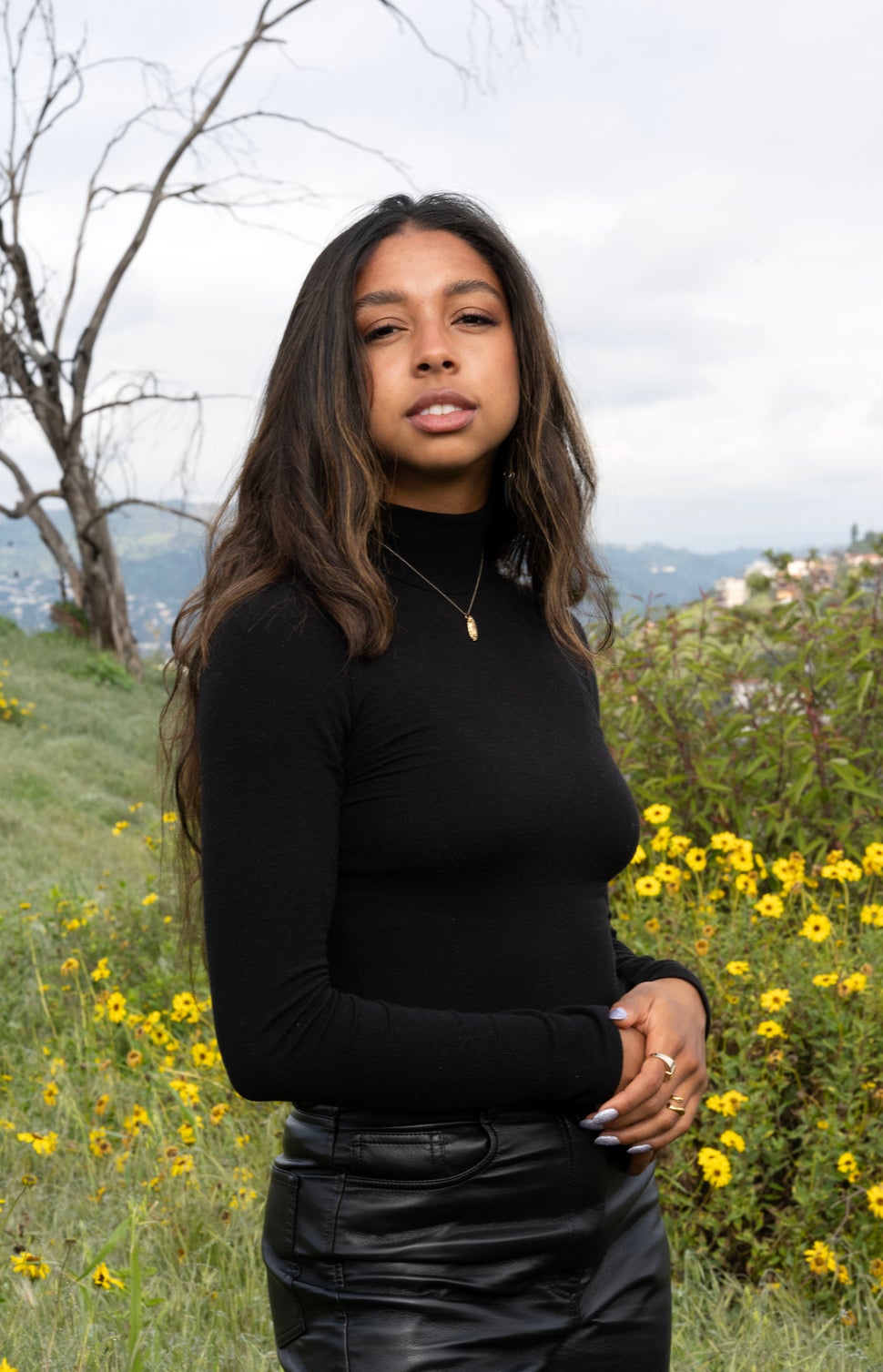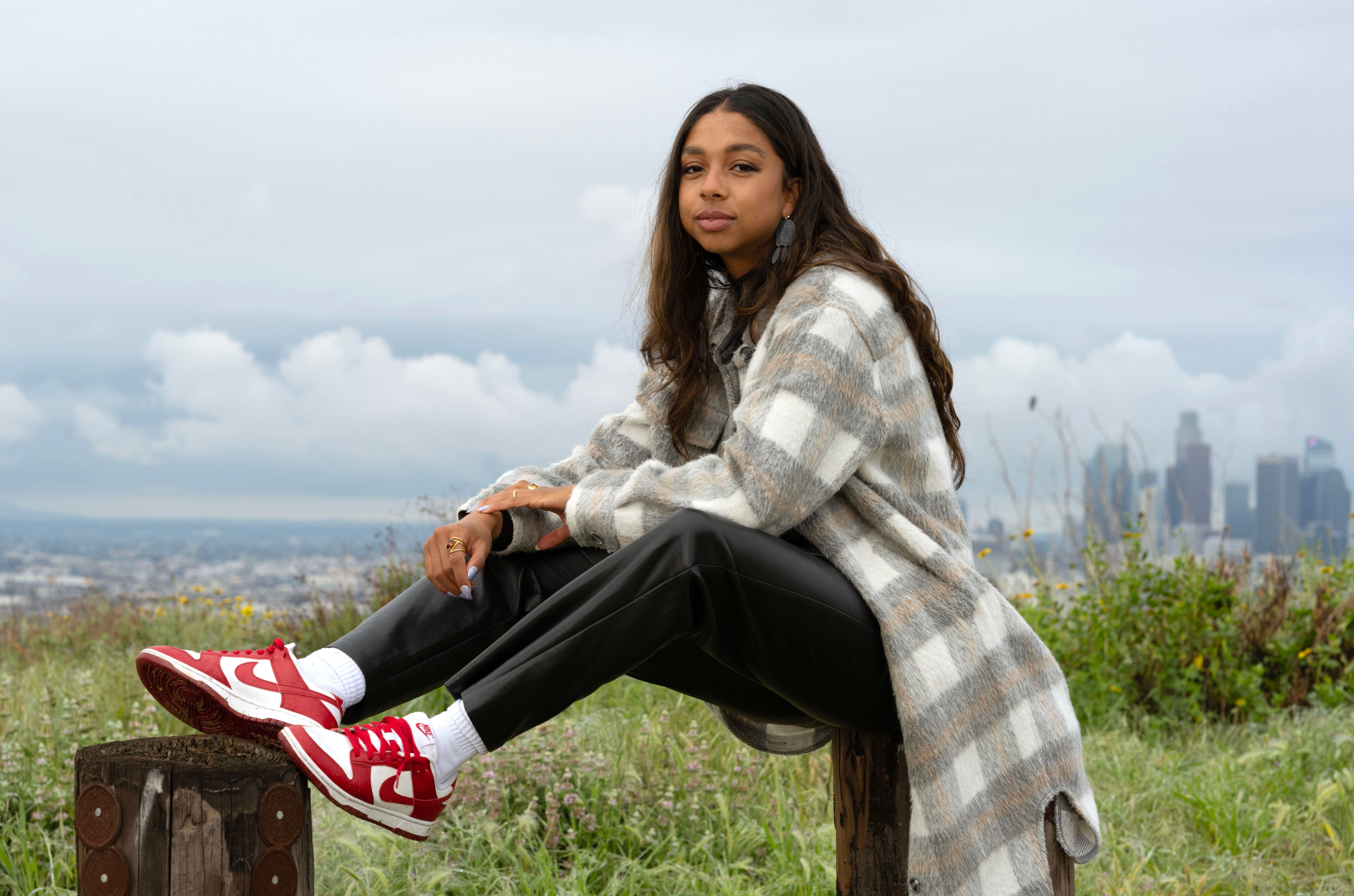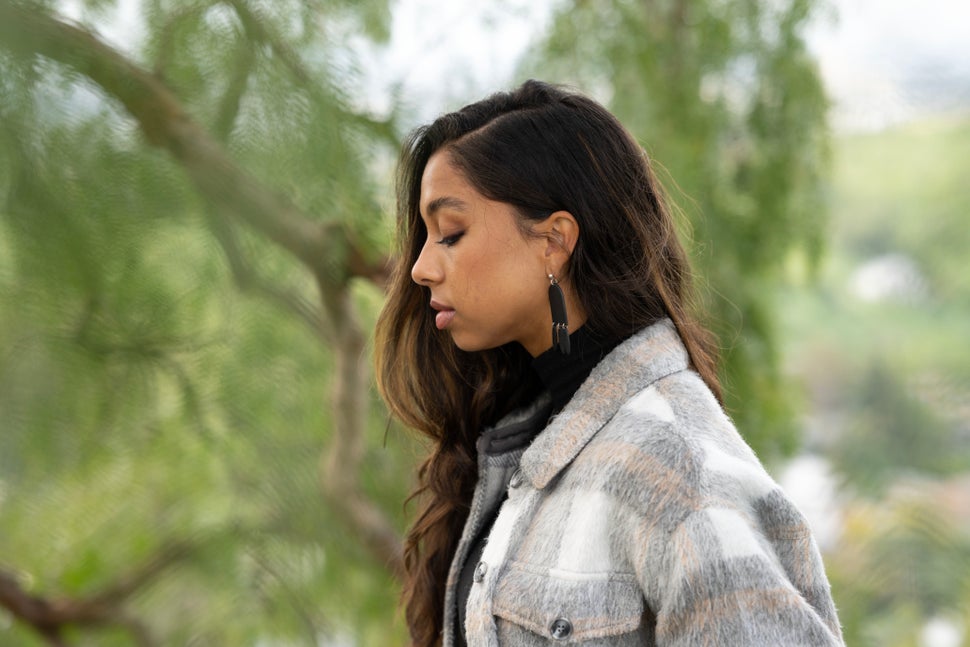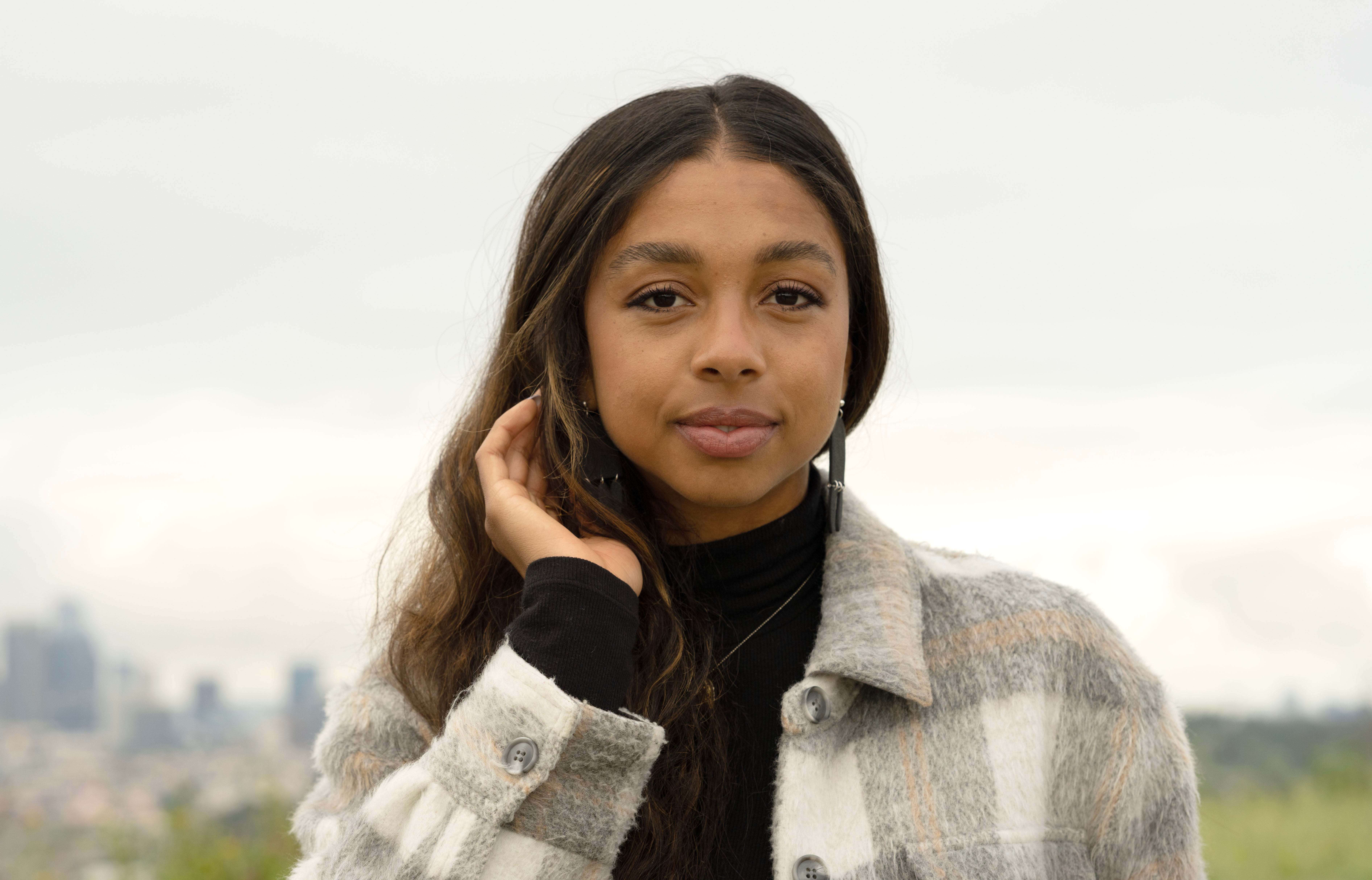April 3, 2023
To read about the other Culture Shifters, return to the list here.
In January 2020, Madison Hammond was riding a train from Sevilla to Madrid during the National Women’s Soccer League college draft in Baltimore. The defender from Wake Forest University had worked diligently to finish her undergraduate degree by the end of fall 2019 ― a semester early ― in order to declare her draft eligibility.
“It was a very bust year, which really didn’t help my personal stock for the draft,” Hammond told HuffPost of her senior year. “I felt like I needed to have a backup plan, so I actually went abroad in January of 2020 to try out for a couple of teams.”
One team wanted her to switch positions on the field from defender to forward. She knew that wasn’t going to work, she said. Another team clicked with her but had no remaining free-agent contracts at the time. The then-22-year-old began to feel defeated.
“As each round goes by, I’m getting more and more flustered, more and more freaked out,” Hammond said. “I’m in the middle of this country by myself, I don’t know what I’m going to do with my life, and I was just sobbing on this train.”
Minutes later, she got a phone call asking her to attend a preseason camp for a team in the NWSL. Then Hammond received a text message from one of her coaches: The Seattle OL Reign had picked up her rights. She hadn’t been drafted exactly, but the team would work with her in the preseason and see if she was ready to join the league.
That year, Hammond, who is Navajo, Pueblo and Black, became the first Native American soccer player in the NWSL. Being “the first” has taken on a life of its own, she said, and given her so many opportunities. Hammond worked with Nike on its N7 collection, honoring Indigenous traditions and craftsmanship. She participated in a panel discussion at Sundance about Native storytelling, and set foot in the White House. Going into her fourth season, Hammond said she’s ready for her identity not to be her sole identifier.

“I think that a lot of people of color, a lot of Black people, a lot of brown people are judged because of who we are and not what we do. I’m ready to show people what I can do, as opposed to just talking about who I am,” Hammond said. “The two can happen in tandem and can work in conjunction with each other. The thing that I’m looking forward to most this season is reclaiming my love for this sport.”
Now competing with Los Angeles’ Angel City Football Club, the 25-year-old defender and midfielder is charting her own path on and off the field.
However, the road to making history wasn’t a smooth one.
After that text message, Hammond flew to Northern Virginia — she moved there from Albuquerque with her family at age 10 — to prep for the preseason. In Seattle, her first training sessions went well. That is, before the COVID-19 pandemic hit in March 2020.
“The world shut down,” she said. “And anybody that wasn’t signed, or was a free agent, was just sent home. I couldn’t help but just laugh. I was like, ‘How is all this happening right now? What am I going to do?’”
Hammond kept working out and training independently for months until Seattle’s OL Reign called on her for the NWSL Challenge Cup “bubble tournament” in Utah. Setting a precedent for other professional sports leagues, the one-month tournament confined teams to “single-site, restricted-access locations,” known as bubbles, where players would eat, sleep and compete away from the outside world ravaged by coronavirus.
So Hammond headed to Missoula, Montana, with her OL Reign teammates for yet another preseason camp. Three weeks into the trip, she was offered and signed her first professional contract.
“It was one of those things where things just change on a dime,” she said.
Following the July tournament, Hammond took to the field as a professional athlete for the first time in the fall of 2020. The OL Reign was competing against the Utah Royals FC, and the rookie survived her first eight minutes of play in the NWSL.
“I always describe that moment as I don’t really remember it. My feet literally did not feel attached to my body, and I was just running around like a chicken with my head cut off,” she laughed. “It was after that when suddenly, Men in Blazers actually reached out to me and they were like, ‘We want to do an interview with you.’ And I was like, ‘Why?’ They were like, ‘You’re the first Native American to play in the NWSL.’”
Her first reaction was: “Can we fact-check?”

Hammond was in disbelief. When she kicked her first soccer ball two decades ago, representation and visibility were not on 5-year-old Madison’s mind. She didn’t even think of playing collegiate soccer until her freshman year of high school. (By then, her peers were already committing to play Division I NCAA soccer.) She was just a hypercompetitive kid who really wanted to be the best, taking every opportunity to level up.
“I actually started playing soccer with boys. That is what really lit my fire because I was not as good as them when I was 5 years old, but I was very committed to being better than them,” said Hammond. “I’ve always been very competitive, and I think that was instilled in me from my family. We’ve had a lot of athletes come through my family.”
Hammond’s uncle played golf on the PGA tour for 20 years, and her older sister, Michaela, played volleyball at New York University. She and her sister were raised in Albuquerque by their single mother, military veteran Carol Lincoln. She wrapped them in her love and that of their tribal community.
Home for Hammond is the San Felipe Pueblo, nestled between Albuquerque and Santa Fe, which consists of “approximately 3,700 enrolled tribal members and approximately 68,000 acres,” according to its website. Hammond is a member of the fox clan; in the tribe’s language of Keres, her name is Shrewaka, which means “magpie.”
When Hammond wasn’t chasing a ball down a field, she was participating in ceremonial days, attending powwows and enjoying the company of her Native American peers. Hammond returns home each year on May 1 for San Felipe Pueblo Feast Day, a 400-year-old tradition celebrating family and food, replete with traditional dances and hundreds of onlookers.
But upon moving to Alexandria, Virginia, at the end of elementary school, Hammond felt a disconnect from her community and her culture. While most people in her New Mexico neighborhoods were either Native, Latino or white, Alexandria was a melting pot of cultures and ethnicities. From a young age, Hammond was tasked with explaining what Indigeneity means to people who had no frame of reference.
“Having this total change at 9, 10 years old, it was definitely a struggle,” Hammond said. “For a long time, I shied away from who I was because it was easier than having to explain. I remember it was Native American Heritage Day, I was in middle school, and I wore a traditional dress. This little boy looks at me and he goes, ‘You kind of look like an old lady.’ I felt super embarrassed. I went home and I told my mom and she was pissed, obviously, and went and talked to my teacher about it.”
Hammond said her teacher did nothing to rectify the situation. Instead, the teacher gave herself a pat on the back for merely acknowledging Native American Heritage Day, despite ignoring the feelings of her lone Indigenous student. The remarks, comments and questions from classmates continued, including, “What are you, Madison?”
“I would tell people, ‘I’m half Black, half Native American,’ and a lot of the times — again, kids being kids — it would be like, ’Oh, you’re like, the ultimate minority?’” said Hammond.
Although Hammond’s father, who is Black, wasn’t in her life, her mother, who is Navajo, still sought to expose Hammond to Black popular culture and people. Hammond is a proud member of the NWSL’s Black Women’s Player Collective.
“It has given me a sense of comfort in just understanding that, in the same way that being Native is not a monolith, being Black is not a monolith. There are so many different Black experiences that look like mine and also don’t look like mine,” Hammond said, acknowledging that her lived experiences will not mirror those of someone brought up in a household with one or two Black parents.

Search for community is what drove her to find a new soccer team in Virginia when she was growing up. She found a girls’ team — one that was far better than the boys’ — and made her mark on the field, eventually playing at the club level. More often than not, Hammond was one of few people of color on her predominantly white soccer teams. However, she leaned on the diverse community of friends she made at school for solace and community.
Yet that dynamic shifts once you become a collegiate athlete. You have less free time, and the people you’re going to two-a-days with, watching film with and living with become your family.
“I had a really, really hard culture shock and identity shock of being Black, being brown in these really white spaces and what that feels like,” Hammond said. “The prickly anxiety that you feel, and you can’t quite name why you’re feeling it. Over the course of my three and a half years at Wake, I really took a journey of just being really proud of being Black, being brown.”
Hammond committed to Wake Forest University, a private institution in Winston-Salem, North Carolina, during her junior year of high school. After a tournament in North Carolina, Hammond’s mother suggested she visit the campus; reluctantly, Hammond went.
“I called the coach on the way to the campus,” she said. “And I was like, ‘Hey, I’m just coming to look at the campus, blah, blah,’ and he dropped everything he was doing. And I fell in love with that school in 13 minutes.”
North Carolina is home to the largest Indigenous population east of the Mississippi River, but less than 1% of students at Wake Forest are Native American. In her first two years as a Demon Deacon, Hammond and one of her peers were the only women of color on the women’s soccer team. During her junior year, Hammond’s alma mater came under fire for photos that emerged of the dean of admissions standing by a Confederate flag and several prominent alumni in blackface.
The school released statements in support of the dean and launched an initiative to foster conversations between students of different backgrounds across all parts of campus. Hammond, who served on the university’s Student Athlete Advisory Committee, attended one session and left livid. For Hammond, the conversation did not adequately address the issues of racism on campus.
“When you have people around you who are sharing similar experiences, they can pinpoint why you’re feeling like this,” she said. “I didn’t really have anybody to voice why I was feeling the way I was feeling.”
The final straw was when one of her teammates wanted to host a Pride Night, and the team’s request was declined because it would make “too much of a political statement.” Hammond let her frustration fuel her. Scared but determined, she penned a letter to the university president: “These recent events are relevant examples that have caused students to question the authenticity of the university’s goal to promote diversity and inclusion unconditionally.”
Little did she know that speaking truth to power would prepare her for joining the NWSL, a league known for its progressive activism and advocacy. Hammond was thrust into the spotlight as a biracial Black and Native player in the league. In 2020, one of the biggest points of contention was kneeling for the national anthem, which Hammond and her teammates on the OL Reign were dedicated to doing.
“A lot of the time, especially as athletes, we’re reduced to ‘shut up and dribble,’ like stick to your sport. That incident really instilled a lot of confidence in me,” she said, referring to the letter she sent to the Wake Forest president. “I can say what I want to say, and I can say it in a way that’s meaningful. Suddenly, you have this huge platform and this huge voice from 10-year veterans in the league.”
In March 2022, after playing with the OL Reign, Hammond was traded to Angel City FC, an NWSL expansion team in Los Angeles with impressive owners such as sports icon Serena Williams and husband Alexis Ohanian, soccer legend Mia Hamm and several others.
While the NWSL was just created in 2012 and has made great leaps toward inclusion, there’s still more work to be done, such as diversifying the coaching staff across the league. Hammond often hears people chalk up issues to a lack of time, bandwidth and financial resources to make an impact.
“At Angel City, I’m willing and able to push back against that, because we have the money, we have the resources, we have the infrastructure in order to make a genuine impact,” Hammond said. “It’s not acceptable to take no for an answer anymore.”

Competing alongside role models ― including Megan Rapinoe, Sydney Leroux, Jasmyne Spencer and others ― and stepping into the NWSL’s legacy has presented Hammond with a bit of a learning curve, but she takes it in stride.
“It was a lot being thrust into the spotlight because I wasn’t equipped with the ways to handle that. I didn’t know what it really meant to be a role model. But I’ve always been somebody that wants to lead by example,” she said.
Last year, ahead of an Angel City FC match against Racing Louisville FC, Hammond was informed that she would not be playing at all. She was hard on herself about it, especially because her mother was in attendance. When Hammond headed to the bathroom, she ran into a little girl with her jersey on.
Soon, her mother, Carol, was chatting with the young fan.
“They’re like, ‘Oh, my God, I can’t believe that you’re right here! We drove all the way from Ohio to come see you! We’re from Navajo Nation as well!’” Hammond said, noting the fans were from the same reservation that her mom was born on in Arizona. “It all just puts it into perspective. I could never step on a soccer field ever again and the impact that I have been able to have and the inspiration that I leave with people doesn’t feel real, because I feel like, ‘Oh, I’m just me.’”
Becoming a pro, Hammond said, meant dealing with a lot of things she had never dealt with prior: impostor syndrome, anxiety and performance anxiety. She said that such visibility and responsibility is a constant push and pull of being responsible to who you are as a person, but also protecting your own space.
“I’ve gotten to do a lot of cool things because of who I am, and I would never want to change that. Now, I’m ready to evolve into the next thing,” she said. “I don’t want to just be the first Native American to play in the NWSL, I want to be the first Native American to make it to the NWSL’s Best XI First Team and get called to the national team.”
“When you’re the first, you don’t have a blueprint of how you’re supposed to do it,” Hammond said. “I don’t know if I’ve been doing it very well, but I have to remember to give myself grace. I’m so happy to be this person, this role model, but I’m ready to level up again, which has always been the name of the game.”